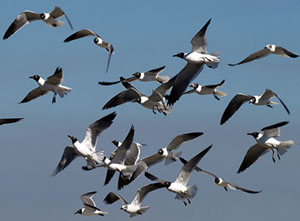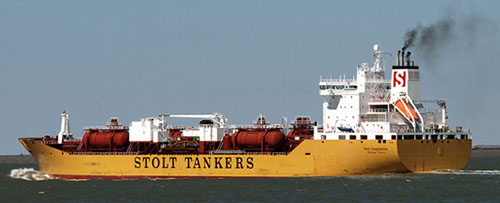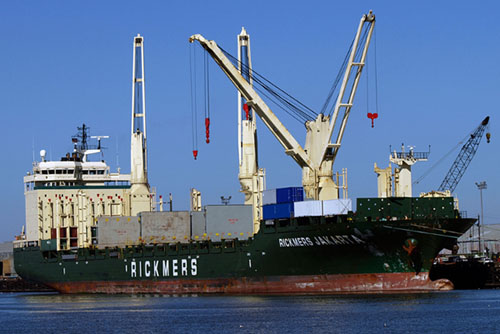Life in a Seaport
Today, life in a seaport town. The University of Houston's College of Engineering presents this series about the machines that make our civilization run, and the people whose ingenuity created them.
Houston Texas, is many things -- universities, high-tech industry, a superb arts community, medical center, parks, malls, downtown skyscrapers. But remember: no automobile can be more beautiful than  the engine under its hood. Eiffel, who built his tower before we first had skyscrapers, reminds us that a building's beauty rests upon its steel frame. And, to see the engine, or the steel frame, of this great city, we need to go down to its wharves.
the engine under its hood. Eiffel, who built his tower before we first had skyscrapers, reminds us that a building's beauty rests upon its steel frame. And, to see the engine, or the steel frame, of this great city, we need to go down to its wharves.
That came home to me this week when, on consecutive days, we got a close look at our ship channel. The channel runs for fifty miles -- from the tip of Galveston Island all the way into the city of Houston. And it makes us the second busiest port in America -- the tenth busiest in the world. Houston handles more international traffic than any other American city.
On the first day, we rode the ferry across the mouth of the channel. Clouds of gulls swirled around us as we paused to let the 76,000 ton MSC Alessia pass by. Almost a thousand feet long -- Alessia is one of the largest container ships. More incoming ships rounded the horizon in the Gulf to the east of us. The Stolt Inspiration, an eye-catching bright-yellow Danish-built tanker, was smaller than the Alessia -- 23,000 tons -- but she still took our breath away at close quarters.


The next day, we did a boat tour of the inner channel. There they were, lined up at dock after dock. The Stolt Inspiration, 150 feet tall from keel to mast height, towered over us. Three huge military transport ships, each over 600 feet and moored end to end, looked like beached whales just arrived from Planet Krypton.
The cargo had already been unloaded from the deck of the 600-foot, bright-blue Norwegian ship Star Eagle. But no Alessia here. Ships of her size berth nearer the mouth of the channel where the water is deeper. And we never see the largest ships of all. The great supertankers, a quarter-mile long and carrying, perhaps, 300,000 tons of oil, offload onto smaller ships or into subsurface pipelines, far from shore.
What we do see are dry-docks, tugboats, scrap piles, warehouses, and cargo ships -- so many cargo ships -- carrying automobiles, dry goods, food, building materials. A vast parking lot holds new VWs and Audis, just north of the channel. The port currently does something like a hundred billion dollars worth of business yearly. The next time I have to wait at a rail crossing for a 200-car, westbound train to pass I'll view it with new respect.
 So we've finally seen the steel skeleton of America's fourth-largest city -- the engine behind it all. As we walked Galveston's shores the other day, we saw the wheeling pelicans, cormorants, and gulls -- dolphins breaching and plunging in the warm waters. Those ships seemed no more than a colorful backdrop to a genteel world. That was, I now realize, a most remarkable trick of perspective.
So we've finally seen the steel skeleton of America's fourth-largest city -- the engine behind it all. As we walked Galveston's shores the other day, we saw the wheeling pelicans, cormorants, and gulls -- dolphins breaching and plunging in the warm waters. Those ships seemed no more than a colorful backdrop to a genteel world. That was, I now realize, a most remarkable trick of perspective.
I'm John Lienhard, at the University of Houston, where we're interested in the way inventive minds work.
The Port of Houston. Nov./Dec. 2008. (Magazine of the Port of Houston.) All photos on this page by JHL.
CLICK HERE to see a Google Earth image of the ship channel.
CLICK HERE to see a Google Earth image of the entry to the channel.

Rickmers Jakarta unloading

The Ramita Naree with a dolphin in the foreground